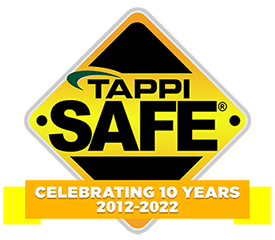 Search
Search
Use the search bar or filters below to find any TAPPI product or publication.
Filters
Content Type
Publications
Level of Knowledge
Collections
Journal articles

Magazine articles

Wheat straw as an alternative pulp fiber, TAPPI Journal January 2020
ABSTRACT: The desire to market sustainable packaging materials has led to an interest in the use of various fiber types as a raw material. It has been suggested that the use of annual crops for partial replacement of wood fiber would result in more sustainable products. Several life cycle analyses (LCA) have been performed to evaluate these claims. These LCAs provided conflicting and contradictory results because of the local conditions and the specific pulping processes investigated. Selected LCAs are reviewed and the underlying reasons for these conflicting results are analyzed.
Magazine articles

Laccase n-hydroxybenzotriazole full sequence bleaching with hydrogen peroxide and chlorine dioxide, TAPPI JOURNAL, September 2000, Vol. 83(9)
Laccase n-hydroxybenzotriazole full sequence bleaching with hydrogen peroxide and chlorine dioxide, TAPPI JOURNAL, September 2000, Vol. 83(9)
Journal articles

Magazine articles

Viscoelastic web curl due to storage in wound rolls, TAPPI Journal July 2020
ABSTRACT: Winding is often the final operation in a roll-to-roll manufacturing process. Web materials, i.e., materials that are thin compared to their length, are wound into rolls because this form is the only practical means to store them. The resulting bending strains and associated stresses are large for thick webs and laminates. As many webs are viscoelastic on some time scale, bending stresses lead to creep and inhomogeneous changes in length. When the web material is unwound and cut into discrete samples, a residual curvature remains. This curvature, called curl, is the inability for the web to lie flat at no tension. Curl is an undesirable web defect that causes loss of productivity in a subsequent web process. This paper describes the development and implementation of modeling and experimental tools to explore and mitigate curl in homogenous webs. Two theoretical and numerical methods that allow the prediction of curl in a web are developed: a winding software based on bending recovery theory, and the implementation of dynamic simula-tions of winding. One experimental method is developed that directly measures the curl online by taking advantage of the anticlastic bending resulting from the curl. These methods are demonstrated for a low-density polyethylene web.
Journal articles

Magazine articles

Development of a fast brightness testing method for mechanical pulp based on microwave oven drying, TAPPI Journal June 2020
ABSTRACT: Brightness is an important quality parameter for pulp products, and it is important to have reliable measurement of pulp brightness in a timely manner for process control and/or quality control purposes. In these circumstances, a quick testing method for pulp brightness is highly desirable.A rapid handsheet brightness testing method for lignin-rich mechanical pulp has been developed, which is based on the use of tap water to make handsheets and microwave ovens to rapidly dry the handsheet. Microwave oven fast drying decreased the handsheet brightness of mechanical pulp by 5•6 points due to the lignin-originated discol-oration reactions. The spray of ascorbic acid and ethylenediaminetetraacetic acid (EDTA) solutions to the handsheet can effectively inhibit these lignin discoloration reactions.With 0.2% ascorbic acid and 0.2% EDTA spraying on the wet pulp handsheet, the brightness of the handsheet from a peroxide-bleached stone groundwood pulp after the microwave oven fast drying method was similar to that obtained from the same pulp but following TAPPI Standard Test Method T 272 sp-12 “Forming handsheets for reflectance testing of pulp (sheet machine procedure)”. The effect of handsheet dryness on the handsheet brightness was also studied, and the results showed that the brightness reading was almost constant in the dryness range of 70% to 90%. The method developed is a reliable, fast brightness testing method for lignin-rich pulp that is of practical interest in industrial operations.
Journal articles

Magazine articles

Effects of different ammonium lignosulfonate contents on the crystallization, rheological behaviors, and thermal and mechanical properties of ethylene propylene diene monomer/polypropylene/ammonium lignosulfonate composites, TAPPI Journal January 2020
ABSTRACT: Thermoplastic elastomer (TPE), made from ethylene propylene diene monomer (EPDM) and polypropylene (PP) based on reactive blending, has an excellent processing performance and characteristics and a wide range of applications. However, there are currently no reports in the literature regarding the usage of TPE in making composite boards. In this paper, EPDM, PP, and ammonium lignosulfonate (AL) were used as the raw materials, polyethylene wax was used as the plasticizer, and a dicumyl peroxide vulcanization system with dynamic vulcanization was used to make a new kind of composite material. This research studied the influences of the AL contents on the crystallization behaviors, rheological properties, thermal properties, and mechanical properties of the composites. The results showed that the AL content had a noticeable impact on the performance of the composite board. Accordingly, this kind of composite material can be used as an elastomer material for the core layer of laminated flooring.
Magazine articles

Predicting boiler emissions with neural networks, TAPPI JOURNAL, May 1997, Vol. 80(5)
Predicting boiler emissions with neural networks, TAPPI JOURNAL, May 1997, Vol. 80(5)
Magazine articles

Vision of the future, TAPPI JOURNAL, November 1996, Vol. 79(11)
Vision of the future, TAPPI JOURNAL, November 1996, Vol. 79(11)
Magazine articles

A financial analysis of north american pulp and paper companies, TAPPI JOURNAL, July 2000, Vol. 83(7)
A financial analysis of north american pulp and paper companies, TAPPI JOURNAL, July 2000, Vol. 83(7)
Magazine articles

Managing technology - a critical contribution to competitiveness, TAPPI JOURNAL, June 2000, Vol. 83(6)
Managing technology - a critical contribution to competitiveness, TAPPI JOURNAL, June 2000, Vol. 83(6)
Magazine articles

Pitfalls of trading market pulp on the internet, TAPPI JOURNAL, November 2000, Vol. 83(11)
Pitfalls of trading market pulp on the internet, TAPPI JOURNAL, November 2000, Vol. 83(11)






